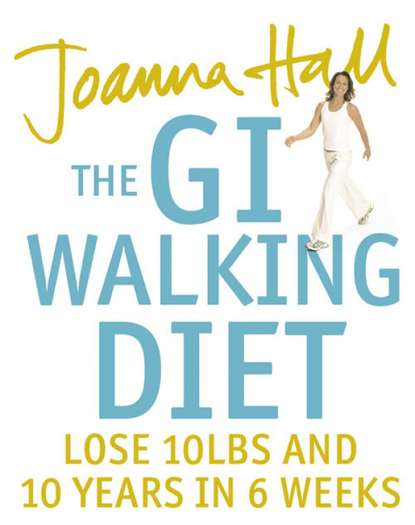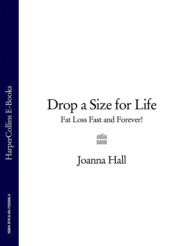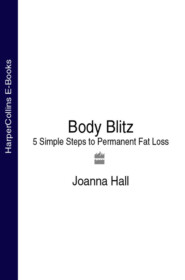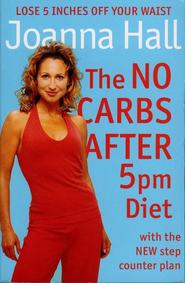По всем вопросам обращайтесь на: info@litportal.ru
(©) 2003-2024.
✖
The GI Walking Diet: Lose 10lbs and Look 10 Years Younger in 6 Weeks
Автор
Год написания книги
2018
Настройки чтения
Размер шрифта
Высота строк
Поля
You’ll find your mobility action plan invaluable.You can do it every day, and in fewer than 14 days you’ll notice a difference in how your body feels; and after three weeks you’ll notice a big improvement in how it moves. You’ll also find the tips on walking technique helpful for enhancing mobility.
Body Stages
The body is on a journey. Like any journey,
the ride may not always be smooth.
For women in particular, hormones play a large part in the changes we notice as we get older. However, men also see their bodies changing as they pass through different stages in life.
Peri-menopause
Peri-menopause is defined as the time leading up to menopause. For some women, this can be eight to ten years before the onset of the menopause itself. Marked by a fluctuation of hormones, it is often described as a roller-coaster ride since the decline in hormones is erratic rather than steady.
During peri-menopause, many women experience a range of symptoms, including:
Mood swings
Memory loss
Bone loss
Potential detrimental changes to their cholesterol levels
Hot flushes
Sleep disturbances
At this stage in their lives, women also experience a drop in metabolism, owing to changes in hormones and muscle mass. This means their bodies require fewer calories to perform normal everyday tasks, and slowly this contributes to weight gain. Oestrogen levels become more erratic, waxing and waning, which causes fat to be stored in the abdomen. Consequently, any weight gain is laid down around the middle, and so middle-age spread is born!
Erratic levels of the hormone oestrogen cause fat to be stored around the abdomen – and so middle-age spread is born!
Peri-menopause is a critical period for a woman’s health. During this time, healthy habits – like regular exercise, good nutrition and an element of stress management – are vital to prepare for the next stage of your life, and to help you handle the physiological and associated emotional changes being experienced.
How the GI Walking Diet Can Help
Follow the six-week plan and you will make a great investment in your health. The structure of the programme will help you form good habits, while all the tips along the way will show you how these physical investments can fit easily into your lifestyle.
Menopause
Menopause is defined as the 12 months after a woman’s final menstrual period, which is usually around the age of 52. Although we tend to think of menopause as a single point in the body’s journey, both peri-menopause and menopause are more like peaks and troughs than finite events. After menopause, women lose about 66 per cent of their oestrogen and 50 to 60 per cent of their testosterone. Oestrogen tends to decline at a faster rate than testosterone, and so testosterone can start to have a greater effect on the body. In most cases, body fat is redistributed from the hips to the midriff. This ‘shape-shifting’ phenomenon compounds the middle-age spread that you may have started to experience during peri-menopause. Blood pressure and cholesterol levels rise. The loss of oestrogen’s protective influence on bone tissue leads to decreases in bone mineral density. On average, women lose 2 per cent of bone mass each year during menopause, yet it is possible to lose up to 20 per cent of bone in the five to seven years after menopause.
While all these changes are happening inside the body, women can experience a range of unpleasant symptoms such as:
Hot flushes
Memory loss
Slowed metabolism
Mood swings
Sexual difficulties
Some of the physical effects of menopause – weight gain, the ‘shape-shifting’ scenario and changes in blood pressure and cholesterol – can put women at a higher risk of cardiovascular disease.
How the GI Walking Diet Can Help
The six-week walking plan will be particularly valuable for your health. You don’t have to be super fit – just head to The Walking Plan (#) and you can choose a starting level to suit you. It really is that simple to start walking off your weight.
The Window of Opportunity Years
The ‘window of opportunity years’ are a time of choice – when you can choose to open the window and experience the benefits of health and fitness. As women move beyond the menopause, and men reach their mid-50s and 60s, normal changes to the body include:
Decreases in the amount of cardiovascular exercise you can perform
Slowing of your reaction time
Loss of muscle mass, strength and endurance
Diminished bone mass and density
With age, women lose more bone than men and so are more susceptible to fractures from falling. Balance training and fall-prevention programmes, such as those in this book, are extremely beneficial to women and men, especially in this ‘mature’ stage of life. Some people are more likely to experience depression, loneliness and apprehension about change at this life stage. If you are not used to exercising, you may lack confidence about taking up a new activity.
The normal, effects of ageing are compounded by a sedentary lifestyle.
How the GI Walking Diet Can Help
The mobility and strength programmes of the six-week plan will be invaluable. You don’t have to spend hours doing them; they literally take minutes and you will reap significant benefits for your body. Many people may be widowed at this stage of life, and exercise offers a great opportunity to meet other people and socialize. Physical activity is known to have a positive effect on depression and mood, so get moving.
Aches and Pains
Some conditions, such as osteoporosis and arthritis, become more prevalent in later life, bringing us aches and pains. When these symptoms come to the surface, you may worry about how much exercise is actually achievable for you. However, the six-week programme addresses these concerns and allows you to tailor your programme to your abilities and needs. We look at some of the most common causes of aches and pains below.
Osteoporosis
Osteoporosis is a skeletal disease characterized by low bone mass, increased bone fragility and risk of fracture. Women are four times more likely to develop osteoporosis than men. Osteoporosis fractures occur most commonly in the hip, spine and wrist. Osteoporosis is often referred to as a silent disease because a fracture is frequently the first indication of bone loss.
How the GI Walking Diet Can Help
Diet and exercise can be both a treatment and prevention, as they help make your bones stronger. The impact to the bones due to walking makes it a great bone-saving exercise, so regular walking will help maintain strong bones. In addition to reducing bone loss, walking will improve muscle strength, balance, agility and fitness, making falls and fractures less likely. You should start slowly and gradually increase the amount you walk each week.
Walking has other life-enhancing psychological and cardiovascular benefits. Increased activity can aid nutrition, too, because it boosts appetite, which is often reduced in older people. It is also important to get enough calcium and vitamin D in your diet. The biggest reason older people don’t get enough of these is that they simply don’t eat enough.
Arthritis
The term ‘arthritis’ refers to more than a hundred different diseases that cause pain, swelling and limited movement in joints and connective tissue throughout the body. Arthritis is usually a long-term condition, often lasting a lifetime. The three most prevalent types of arthritis are osteoarthritis, fibromyalgia and rheumatoid arthritis (see below).
Arthritis and other rheumatic conditions affect an estimated one in seven people. The number one cause of disability, arthritis can limit everyday activities such as dressing, climbing the stairs, getting in and out of bed and walking.











